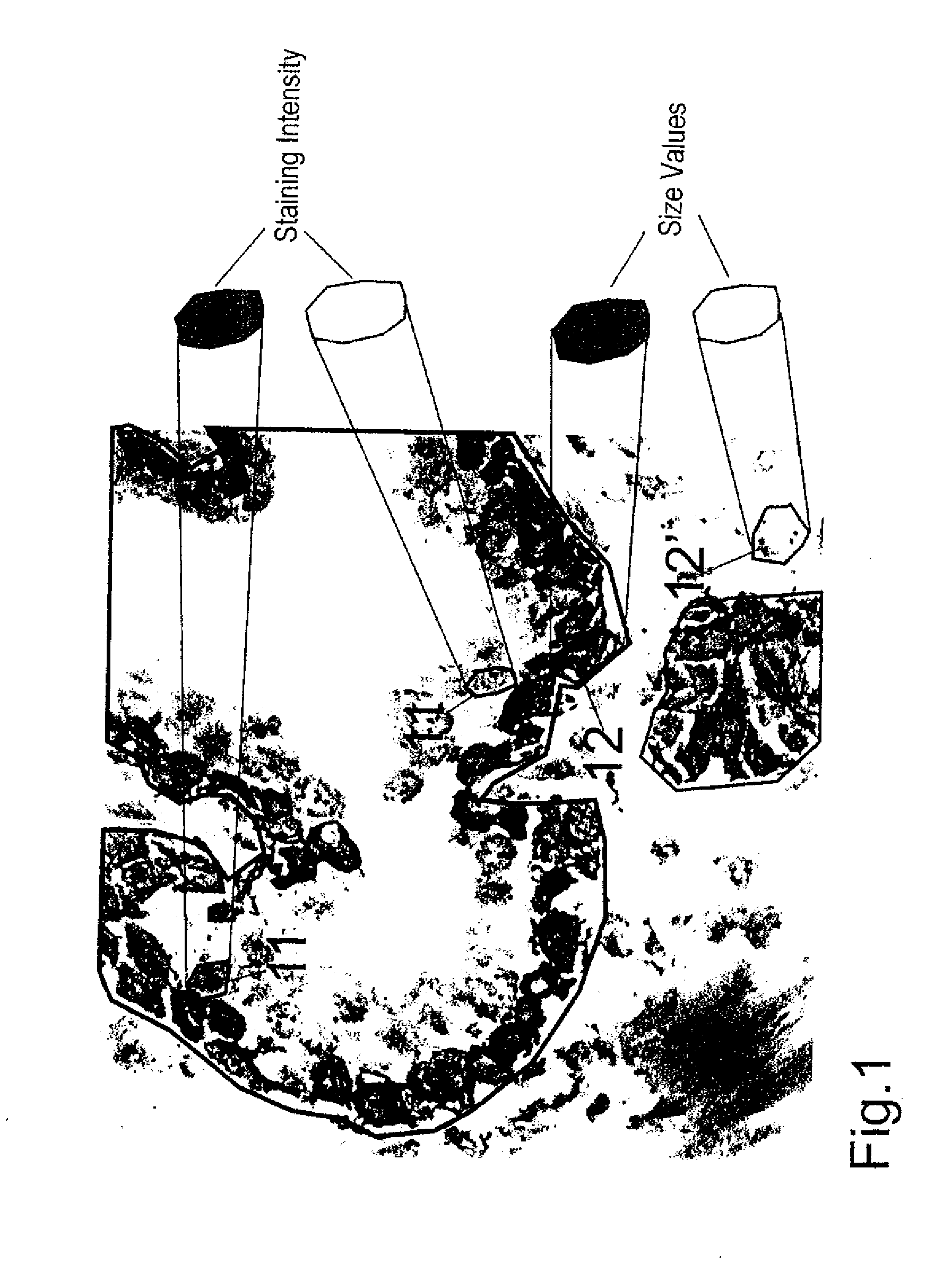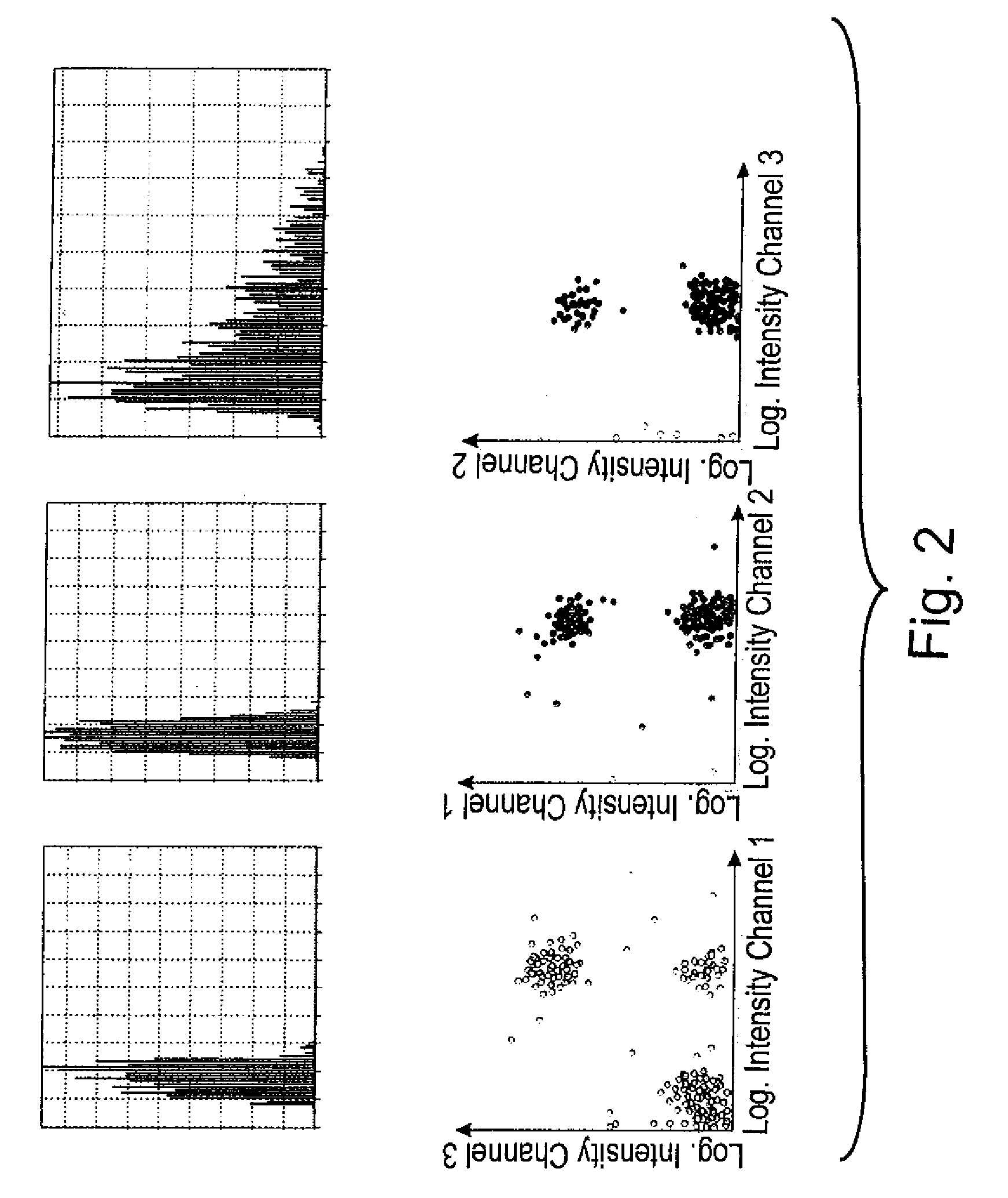Methods and system for analyzing cells
a cell and method technology, applied in the field of methods and systems for analyzing cells, can solve the problems of limiting the identification of nucleus, the prior method is limited to identification, and the planer solid tissue cells pose a unique problem, so as to control the correctness of separation and high the risk of metastasis
- Summary
- Abstract
- Description
- Claims
- Application Information
AI Technical Summary
Benefits of technology
Problems solved by technology
Method used
Image
Examples
Embodiment Construction
[0029]FIG. 1 shows a kidney section as an example of a tissue specimen. Cell nuclei (identity stain, in blue) and cytoplasm (target structure stain) were stained. After the staining of tissue specimens parts are defined and scanned, for example, with the help of an Eppendorf micromanipulator. Using a laser-scanning microscope, for example, two scans are performed in the z-plain. One of these is a rough scan, the other a fine scan both of which are guided along a horizontal line in the middle of the image. The focus of the scan can be adjusted to the brightest region. The scan takes, for example, 4 seconds per microscopic field of view, where each section is scanned only once using an argon laser (488 nm). It is possible to undertake multiple scans in sequence. In order to obtain distinctive stains it would be possible, for example, to perform a first scan using 543 nm He / Ne laser so as to measure the fluorochromes cyanine 5 (Cy5) or Cy3. This may be followed by a scan using a 488 nm...
PUM
 Login to View More
Login to View More Abstract
Description
Claims
Application Information
 Login to View More
Login to View More - R&D
- Intellectual Property
- Life Sciences
- Materials
- Tech Scout
- Unparalleled Data Quality
- Higher Quality Content
- 60% Fewer Hallucinations
Browse by: Latest US Patents, China's latest patents, Technical Efficacy Thesaurus, Application Domain, Technology Topic, Popular Technical Reports.
© 2025 PatSnap. All rights reserved.Legal|Privacy policy|Modern Slavery Act Transparency Statement|Sitemap|About US| Contact US: help@patsnap.com



